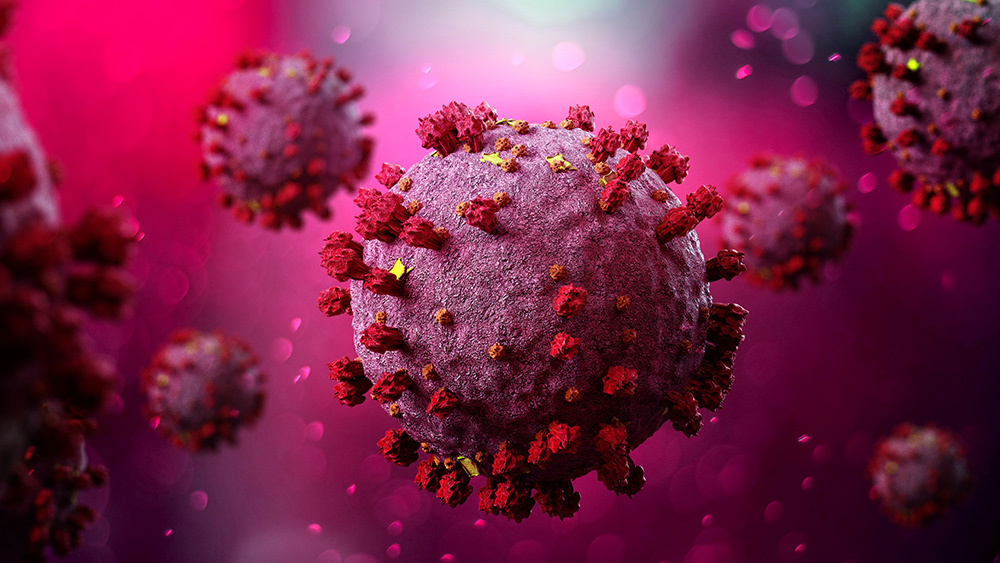Potomac River contains “astronomical levels” of forever chemicals, studies say
09/10/2021 / By Mary Villareal

Citizens in Washington, D.C., are exposed to toxins in their daily lives, and the government is consistently looking the other way.
In late July, the District of Columbia’s Statehood Green Party sent a letter to the Director of Washington D.C. Department of Energy & Environment, Tommy Wells, warning him of unregulated per- and polyfluoroalkyl substances (PFAS) contamination in the area. The party cited a study that found astronomical levels of PFAS produced by DC Water’s Blue Plains Advanced Wastewater Treatment Plant in Bloom Soil Conditioner products.
Bloom Soil Conditioner is sold in hardware stores in the district, and it is said to contain 100 percent sewer sludge, referred to as “biosolids.”
SGS AXYS Analytical Services, a Persistent Organic Pollutants (POPs) and Contaminants of Emerging Concern (CEC) analysis firm, measured levels of PFA chemicals in soil products from nine garden fertilizers in eight states and D.C. They found that total PFAS ranged from 38,000 parts per trillion (ppt) to 223,000 ppt.
Among these, Bloom Soil Conditioner was the most contaminated of all the PFAs tested. The product contained 23,800 ppt of perfluorooctanoic acid (PFOA) and 22,100 ppt of perfluorooctane sulfonic acid (PFOS), which are considered to be the most toxic varieties of PFAS.
Longtime D.C. Statehood Green Party Leader Ann Wilcox said that preliminary inquiry showed that PFAS are dangerous chemicals that should be regulated by the DC government and that authorities should conduct comprehensive testing for PFAS in soil, water and fish alike.

Sewer sludge is poisonous and is easily spread in gardens and farm fields, especially during the rainy season. The waters drain into the aquifer and run into surface water, and is ultimately used for human consumption. PFOS does not break down and it travels far in the water, where they can be accumulated in fish.
This is problematic because people fish for bass and catfish in the Potomac River, just south of the wastewater treatment plant.
Michigan tested 2,841 fish for PFAS in the previous year and found that the average fish contained 80,000 ppt of PFAS, most of which are PFOS. While the state limits PFOS in drinking water to 16 ppt of PFOS, people can still eat the contaminated fish.
Senior Toxics Policy Adviser for the Sierra Club, Sonya Lunder, said that the Environmental Protection Agency (EPA) and states must take swift action to enact strong standards that will help safeguard people from toxic PFAS that continue to flow into wastewater and keep contaminated sewage wastes out of home gardens and farmlands.
The U.S. Navy also reported high concentrations of “forever chemicals” in groundwater beneath the Patuxent River airbase in Southern Maryland and another smaller airfield nearby, on the St. Mary’s River.
Public concern about PFAS contamination around the facilities has been heightened since early 2020 when a private lab test of water from a tidal creek found elevated concentrations of PFAS. (Related: Tap water near hundreds of US military bases and thousands of industry areas CONTAMINATED with “forever chemicals,” warn experts.)
PFAS: What are they and where do they come from?
PFAS are fire, oil, grease, water, and stain-resistant man-made chemicals found in many consumer and industrial products, such as non-stick cookware, stain repellant, dental floss, and even cosmetics.
In the last 70 years, PFAS like Teflon have been used to enhance everyday products, and thus, humans are exposed to it by eating, inhaling or touching the product. Some PFAS are known to be bad for human health. Despite bans of hundreds of these products, there are thousands more in existence, and more than 600 of them are still used in the U.S. for commercial purposes.
Consuming seafood from PFAS-contaminated water is the primary source of human contamination. the European Food Safety Authority (EFSA) estimates that the fish could account for up to 86 percent of dietary PFAS exposure in adults. The second most prevalent pathway for exposure are food grown in soils that are treated with sewer sludge or biosolids.
In May 2021, the Agency for Toxic Substance and Disease Registry published its toxicological profile for Perfluoroalkyls. They said in their report that evidence from studies suggests associations between perfluoroalkyl exposure and several health outcomes including liver damage, increases in serum lipids, thyroid disease, immune effects, reproductive toxicity and developmental toxicity. In laboratory animals, liver, developmental and immune toxicity are among the major concerns.
Get more information about water pollution, PFAS and toxic chemicals at Pollution.news.
Sources include:
Tagged Under: chemicals, Ecology, environment, forever chemicals, PFAS, PFOA, PFOS, products, toxic chemicals, toxins, water, water health





















